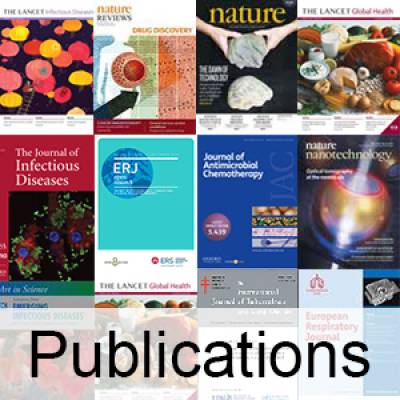Here is a selection of recent UCL-TB publications, please go here for a full list of the latest UCL tuberculosis papers.
 |
Blood transcriptomic diagnosis of pulmonary and extrapulmonary tuberculosisNovel rapid diagnostics for active tuberculosis (TB) are required to overcome the time delays and inadequate sensitivity of current microbiological tests that are critically dependent on sampling the site of disease. Multiparametric blood transcriptomic signatures of TB have been described as potential diagnostic tests. We sought to identify the best transcript candidates as host biomarkers for active TB, extend the evaluation of their specificity by comparison with other infectious diseases, and to test their performance in both pulmonary and extrapulmonary TB. Jennifer K Roe, Niclas Thomas, Eliza Gil, Katharine Best, Evdokia Tsaliki, Stephen Morris‑Jones, Sian Stafford, Nandi Simpson, Karolina D Witt, Benjamin Chain, Robert F Miller, Adrian Martineau, and Mahdad Noursadeghi |
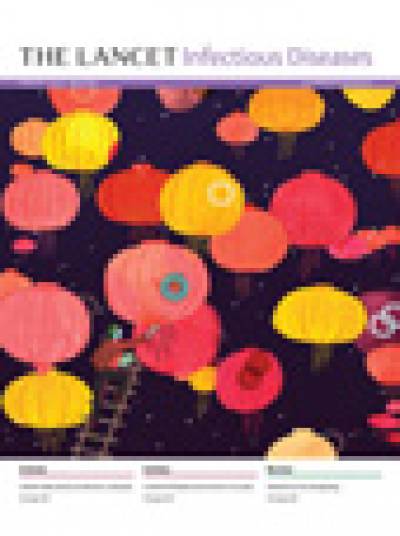 |
High-dose rifampicin, moxifloxacin, and SQ109 for treating tuberculosis: a multi-arm, multi-stage randomised controlled trialTuberculosis is the world's leading infectious disease killer. We aimed to identify shorter, safer drug regimens for the treatment of tuberculosis.
Martin J Boeree, Norbert Heinrich, Rob Aarnoutse, Andreas H Diacon, Rodney Dawson, Sunita Rehal, Prof Gibson S Kibiki, Prof Gavin Churchyard, Ian Sanne, Nyanda E Ntinginya, Lilian T Minja, Robert D Hunt, Salome Charalambous, Madeleine Hanekom, Hadija H Semvua, Stellah G Mpagama, Christina Manyama, Bariki Mtafya, Klaus Reither, Prof Robert S Wallis, Amour Venter, Kim Narunsky, Anka Mekota, Sonja Henne, Angela Colbers, Georgette Plemper van Balen, Prof Stephen H Gillespie, Patrick P J Phillips, Prof Michael Hoelscher |
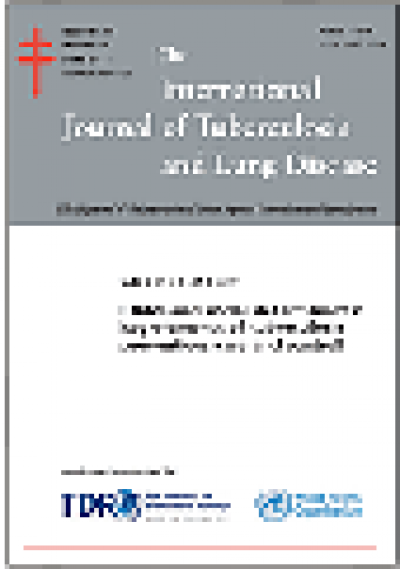 |
Plan Beta for tuberculosis: it's time to think seriously about poorly ventilated congregate settingsGlobally, the rates of decline in tuberculosis (TB) incidence are disappointing, but in line with model predictions regarding the likely impact of the DOTS strategy. Here, we review evidence from basic epidemiology, molecular epidemiology and modelling, all of which suggest that, in high-burden settings, the majority of Mycobacterium tuberculosis transmission may occur in indoor congregate settings. Dr Tom A Yates, Prof Frank Tanser, Prof Ibrahim Abubakar |
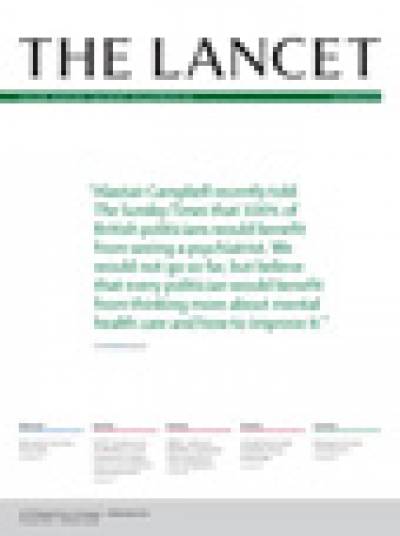 |
The transmission of Mycobacterium tuberculosis in high burden settingsUnacceptable levels of Mycobacterium tuberculosis transmission are noted in high burden settings and a renewed focus on reducing person-to-person transmission in these communities is needed. We review recent developments in the understanding of airborne transmission. We outline approaches to measure transmission in populations and trials and describe the Wells-Riley equation, which is used to estimate transmission risk in indoor spaces. Dr Tom A Yates, MSc correspondence, Palwasha Y Khan, MBBCh, Gwenan M Knight, PhD, Jonathon G Taylor, PhD, Prof Timothy D McHugh, PhD, Marc Lipman, MD, Richard G White, PhD, Ted Cohen, MD, Prof Frank G Cobelens, PhD, Prof Robin Wood, DSc [Med], Prof David A J Moore, MD, Prof Ibrahim Abubakar, FRCP |
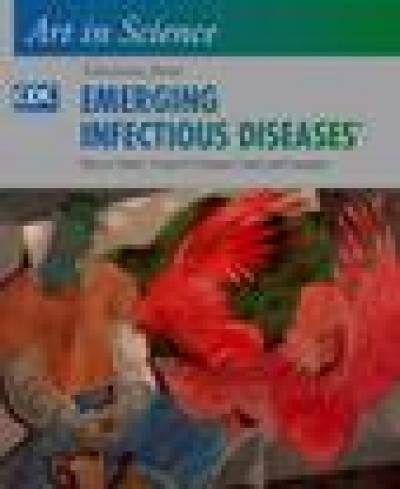 |
Decreased Time to Treatment Initiation for Multidrug-Resistant Tuberculosis Patients after Use of Xpert MTB/RIF Test, LatviaFew studies have examined whether the Xpert MTB/RIF test improves time to treatment initiation for persons with multidrug-resistant tuberculosis (MDR TB). We determined the impact of this test in Latvia, where it was introduced in 2010. After descriptive analyses of pulmonary MDR TB patients in Latvia during 2009-2012, time to treatment initiation was calculated, and univariate and multivariable accelerated failure time models were constructed. Univariate results showed strong evidence of an association between having rifampin-resistant TB detected by Xpert MTB/RIF and reduced time to treatment initiation versus the test not being used. Helen R. Stagg, Peter J. White, Vija Riekstiņa, Andra Cīrule, Ģirts Šķenders, Vaira Leimane, Liga Kuksa, Gunta Dravniece, James Brown, and Charlotte Jackson |
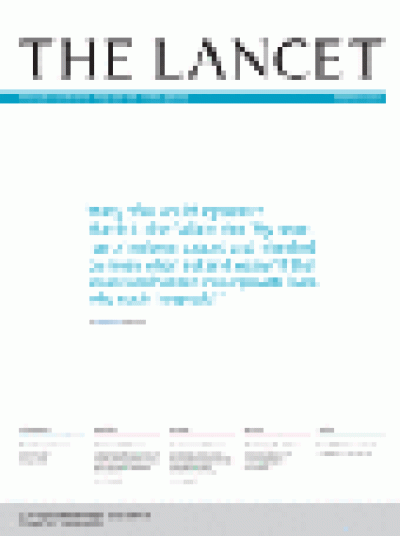 |
Controlling the seedbeds of tuberculosis: diagnosis and treatment of tuberculosis infectionThe billions of people with latent tuberculosis infection serve as the seedbeds for future cases of active tuberculosis. Virtually all episodes of tuberculosis disease are preceded by a period of asymptomatic Mycobacterium tuberculosis infection; therefore, identifying infected individuals most likely to progress to disease and treating such subclinical infections to prevent future disease provides a crucial opportunity to interrupt tuberculosis transmission and reduce the global burden of tuberculosis disease. Programmes focusing on single strategies rather than comprehensive programmes that deliver an integrated arsenal for tuberculosis control might continue to struggle. Molebogeng X Rangaka, Solange C Cavalcante, Ben J Marais, Sok Thim, Neil A Martinson, Soumya Swaminathan, Richard E Chaisson |
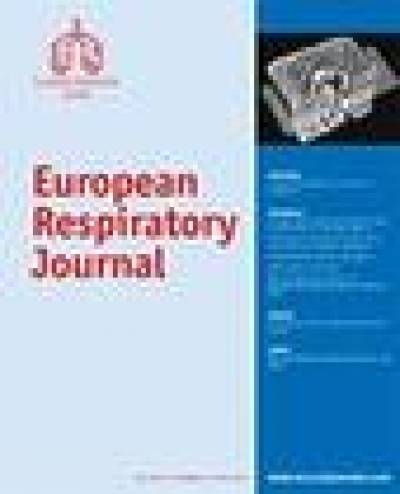 |
Decreasing cost effectiveness of testing for latent TB in HIV in a low TB incidence areaTesting for latent tuberculosis infection (LTBI) in HIV-infected persons in low tuberculosis (TB) incidence areas is often recommended. Using contemporary, clinical data, we report the yield and cost-effectiveness of testing all HIV attendees, two current UK strategies and no LTBI testing.Economic modelling was performed utilising 10-year follow up data from a large HIV clinical cohort. Capocci S, Smith C, Morris S, Bhagani S, Cropley I, Abubakar I, Johnson M, Lipman M. |
 |
Data for action: collection and use of local data to end tuberculosisAccelerating progress in the fight against tuberculosis will require a drastic shift from a strategy focused on control to one focused on elimination. Successful disease elimination campaigns are characterised by locally tailored responses that are informed by appropriate data. To develop such a response to tuberculosis, we suggest a three-step process that includes improved collection and use of existing programmatic data, collection of additional data (eg, geographic information, drug resistance, and risk factors) to inform tailored responses, and targeted collection of novel data (eg, sequencing data, targeted surveys, and contact investigations) to improve understanding of tuberculosis transmission dynamics. Grant Theron, Helen E Jenkins, Frank Cobelens, Ibrahim Abubakar, Aamir J Khan, Ted Cohen, David W Dowdy |
 |
Towards host-directed therapies for tuberculosisThe treatment of tuberculosis is based on combinations of drugs that directly target Mycobacterium tuberculosis. A new global initiative is now focusing on a complementary approach of developing adjunct host-directed therapies. Alimuddin Zumla, Jeremiah Chakaya, Michael Hoelscher, Francine Ntoumi, Roxana Rustomjee, Cristina Vilaplana, Dorothy Yeboah-Manu, Voahangy Rasolof, Paula Munderi, Nalini Singh, Eleni Aklillu,Nesri Padayatchi,Eusebio Macete, Nathan Kapata, Modest Mulenga, Gibson Kibiki, Sayoki Mfinanga, Thomas Nyirenda, Leonard Maboko, Alberto Garcia-Basteiro, Niaina Rakotosamimanana, Matthew Bates, Peter Mwaba, Klaus Reither, Sebastien Gagneux |
 |
Sensors: Good vibrations for bad bacteriaInfections that are resistant to antibiotics are one of the gravest threats to human health with the correct treatment of an infection relying on early detection with accurate diagnostic tests, but current gold-standard methods are slow, requiring days to weeks to culture. Writing in Nature Nanotechnology, Giovanni Longo and colleagues have now shown that low-frequency fluctuations of atomic force microscopy cantilevers can be used to characterize bacteria, rapidly test their sensitivity to antibiotics and identify resistance within minutes. McKendry, RA; Natascha K |
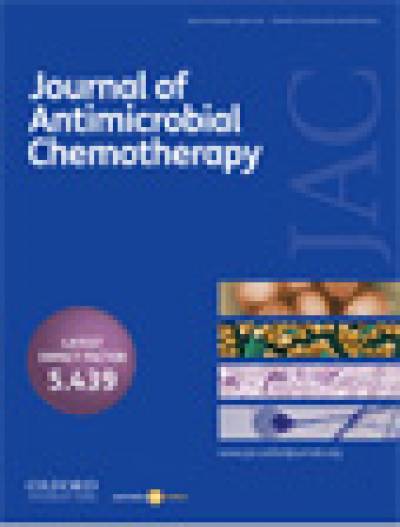 |
The relationship between Mycobacterium tuberculosis MGIT time to positivity and cfu in sputum samples demonstrates changing bacterial phenotypes potentially reflecting the impact of chemotherapy on critical sub-populationsThe relationship between cfu and Mycobacterial Growth Indicator Tube (MGIT) time to positivity (TTP) is uncertain. We attempted to understand this relationship and create a mathematical model to relate these two methods of determining mycobacterial load. Bowness, R; Boeree, MJ; Aarnoutse, R; Dawson, R; Diacon, A; Mangu, C; Heinrich, N; Ntinginya, NE; Kohlenberg, A;Mtafya, B; Phillips, PP; Rachow, A; Plemper van Balen, G; Gillespie, SH |
 |
Eighteenth-century genomes show that mixed infections were common at time of peak tuberculosis in EuropeTuberculosis (TB) was once a major killer in Europe, but it is unclear how the strains and patterns of infection at 'peak TB' relate to what we see today. Here we describe 14 genome sequences of M. tuberculosis, representing 12 distinct genotypes, obtained from human remains from eighteenth-century Hungary using metagenomics. Gemma L. Kay, Martin J. Sergeant, Zhemin Zhou, Jacqueline Z.-M. Chan, Andrew Millard, Joshua Quick, Ildikó Szikossy, Ildikó Pap, Mark Spigelman, Nicholas J. Loman, Mark Achtman, Helen D. Donoghue & Mark J. Pallen |
 |
Shortening treatment of tuberculosis: lessons from fluoroquinolone trialsClinical trial settings the standard 6-month treatment regimen for drug-sensitive pulmonary tuberculosis can achieve relapse-free cure in more than 95% of people. However, poor adherence might increase the risk of relapse and lead to drug resistance. Nimmo, C; Lipman, M; Phillips, PPJ; McHugh, T; Nunn, A; Abubakar, I; (2015) |
 |
A collaborative strategy to tackle tuberculosis in England. The UK has the second highest rate of tuberculosis among western European countriesTuberculosis clinics in London manage more cases a year than those in all other western European capital cities put together. Rates of tuberculosis are now nearly five times higher in the UK than in the USA.2 Lack of progress with tuberculosis control in the UK does not just represent a risk to domestic public health,3 but also an international embarrassment with examples of cases acquired in the UK leading to infections in other low-incidence countries. Abubakar, I; Thomas, HL; Morgan, M; Anderson, S; Zenner, D; Cosford, P; (2015) |
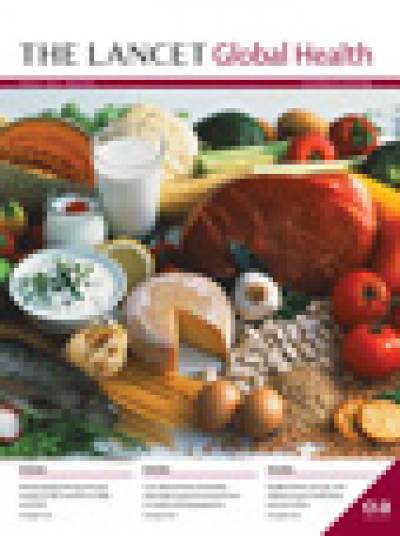 |
The WHO 2014 global tuberculosis report--further to go.In May 2014, the World Health Assembly officially approved the Draft Global Strategy and Targets for Tuberculosis Prevention, Care and Control after 2015The target of the strategy is the elimination of tuberculosis as a public health threat by 2035. This target is ambitious, but the commitment to the end of tuberculosis is laudable. The recently published 19th WHO global tuberculosis report 2014,2provides an opportunity to think once again on the global tuberculosis strategy, and to assess just how much further effort is needed before global tuberculosis control can be achieved. Zumla, A; George, A; Sharma, V; Herbert, RH; Baroness Masham of Ilton,; Oxley, A; Oliver, M; (2015) |
 |
Drug-resistance mechanisms and tuberculosis drugs.Bedaquiline and delamanid, novel classes of anti-tuberculosis drugs, have been recently approved for the treatment of multidrug-resistant tuberculosisAntimicrobial resistance invariably follows the introduction of new drugs, and appropriate drug-susceptibility testing assays are needed to detect resistance and tailor treatment regimens that contain new agents.2,3 Given that phenotypic drug-susceptibility testing is slow, technically demanding, and, in some cases, unreliable, future assays are likely to be based on rapid molecular techniques. Köser, CU; Javid, B; Liddell, K; Ellington, MJ; Feuerriegel, S; Niemann, S; Brown, NM; Burman, WJ; Abubakar, I; Ismail, NA; Moore, D; Peacock, SJ; Török, ME: (2015) |
 Close
Close


